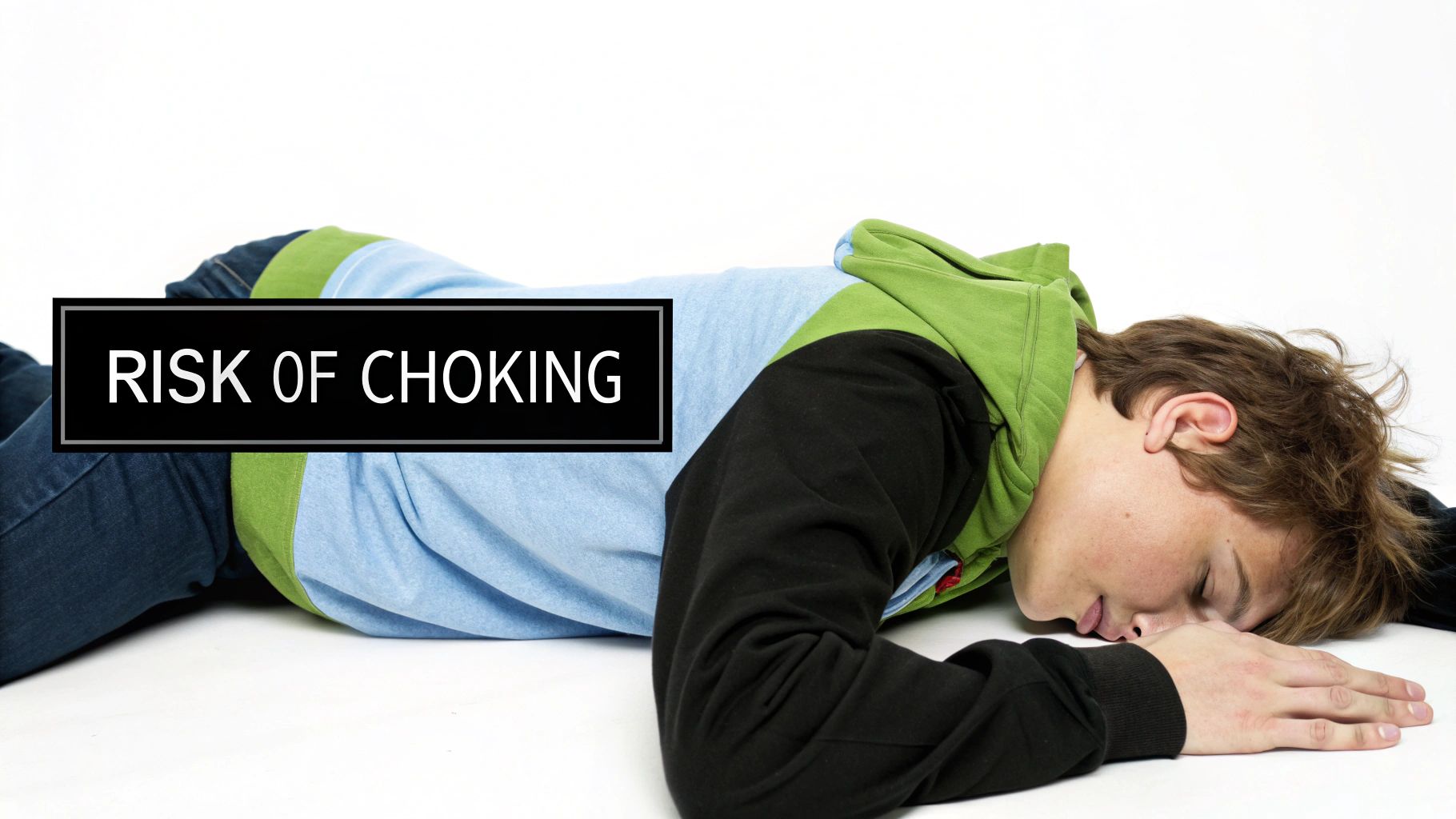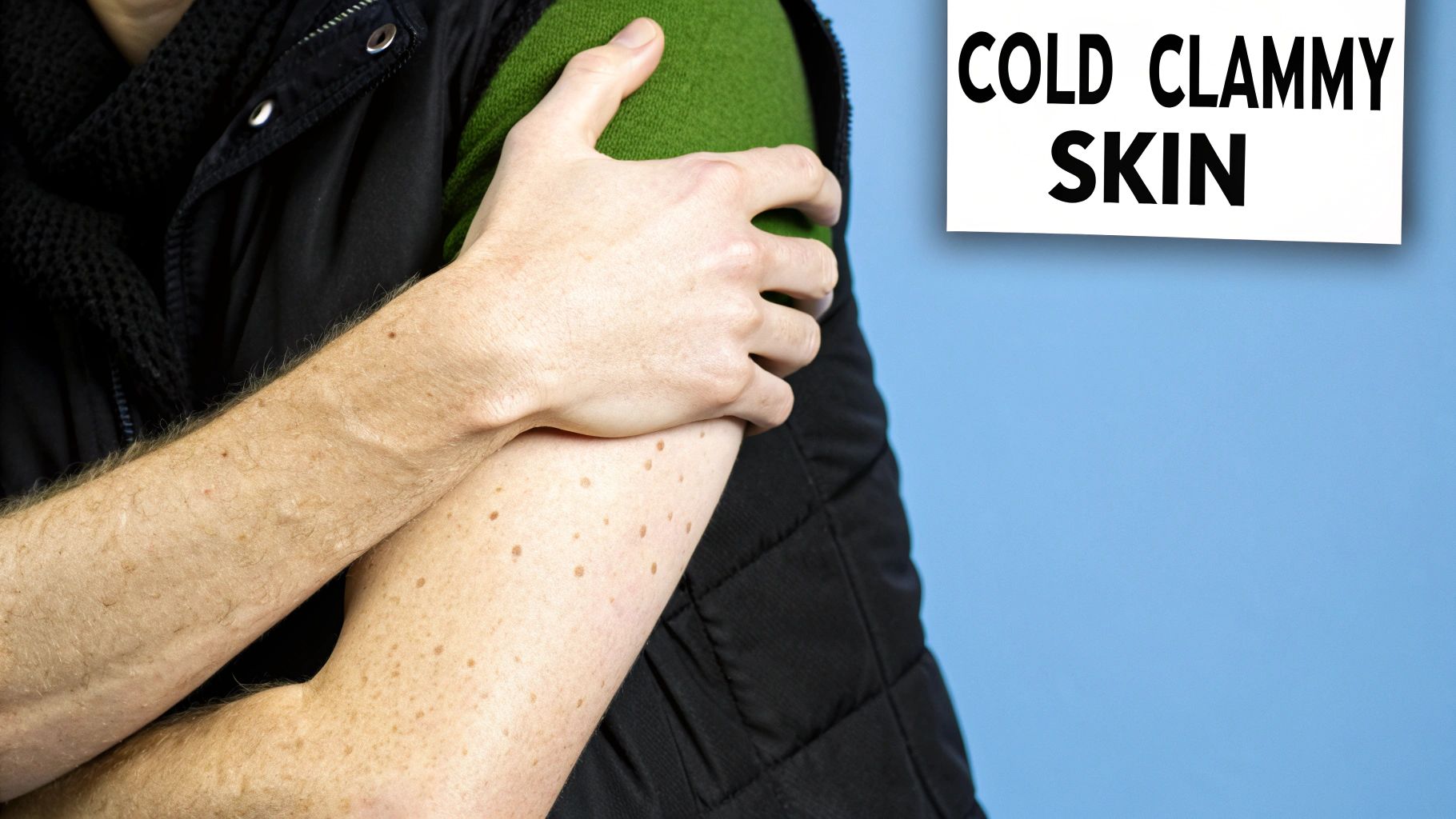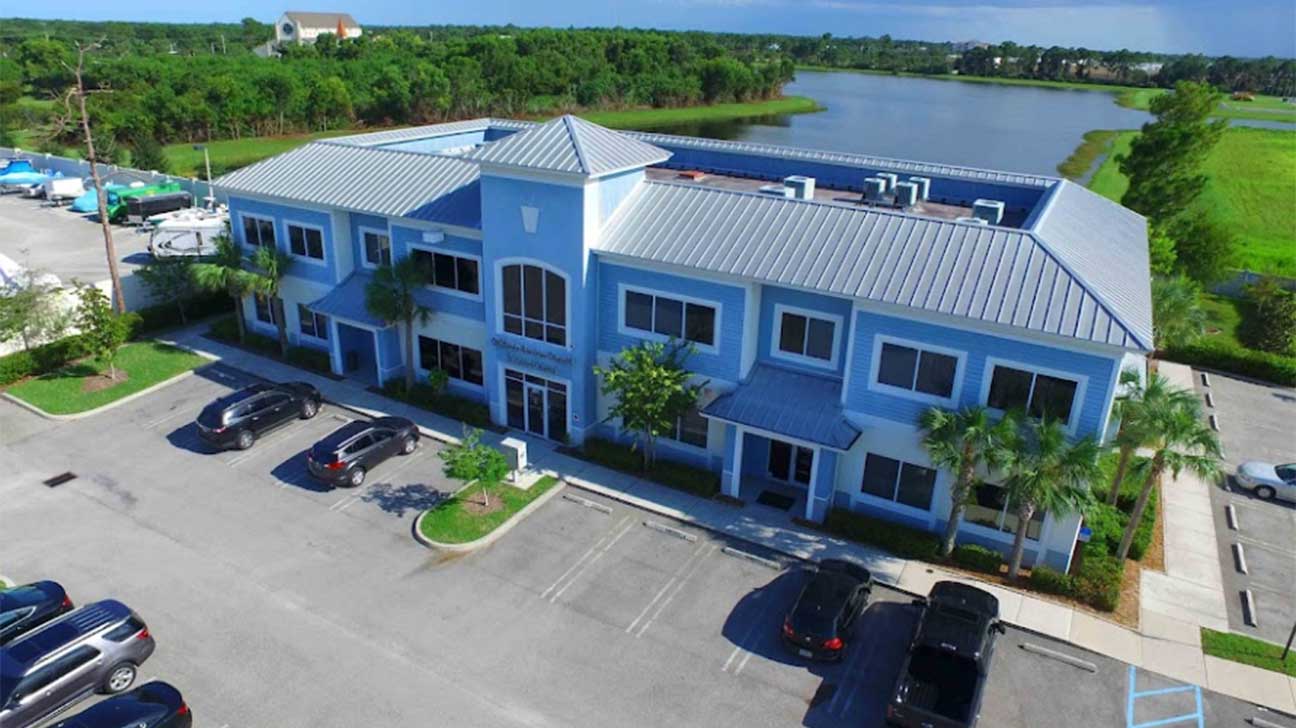
Drinking is often associated with social gatherings and relaxation, but there’s a critical line where having a few too many becomes a life-threatening medical emergency. Alcohol poisoning, or alcohol overdose, occurs when a person consumes more alcohol than their body can safely process, leading to a shutdown of critical life-support systems. This condition is frequently misunderstood and dangerously underestimated, often dismissed as simply being very drunk.
Recognizing the signs of alcohol poisoning is not about judgment; it is about life-saving awareness. Knowing what to look for and how to react can mean the difference between a night of regret and a preventable tragedy. The symptoms can escalate quickly, turning a seemingly manageable situation into a crisis within minutes.
This guide moves beyond common assumptions to detail the most critical symptoms of an alcohol overdose. We will explore seven key indicators, explaining what is happening inside the body for each one and providing clear, actionable steps for you to take. Understanding these dangers is the first step toward protecting yourself and others. If you suspect someone has alcohol poisoning, knowing these signs will empower you to act decisively and seek immediate medical help.
1. Mental Confusion and Stupor
One of the most alarming signs of alcohol poisoning is a severe change in mental state, progressing from simple confusion to a complete stupor. This isn’t just the typical disorientation associated with being drunk; it’s a profound impairment of brain function. Alcohol, a central nervous system depressant, slows down brain activity to a dangerous degree, affecting everything from basic awareness to the ability to process simple information. A person in this state might not know where they are, who they are with, or what is happening around them.

This symptom is a critical indicator that the body is overwhelmed by alcohol, and it signals a medical emergency. The brain is struggling to maintain consciousness and basic cognitive functions. Ignoring this sign can lead to the person becoming unresponsive, which increases the risk of choking on their own vomit or suffering from respiratory arrest.
How to Recognize Severe Confusion
Distinguishing between intoxication and a dangerous level of confusion is key. Look for these specific behaviors:
- Incoherent Responses: The person may mumble nonsensically or be completely unable to answer simple questions like “What is your name?” or “Where are you?”
- Lack of Awareness: They might stare blankly into space, not reacting to sounds, touch, or people trying to get their attention.
- Extreme Disorientation: They may not recognize friends or family and appear lost and frightened even in a familiar environment.
- Stupor: This is a near-unconscious state where the person is very difficult to rouse. They may only respond to very strong stimuli, like loud shouting or a firm shake, and will immediately lapse back into unresponsiveness.
Crucial Insight: “Severe confusion or stupor is a sign that the brain is failing to manage vital functions. This is not something that a person can simply “sleep off” and requires immediate medical intervention.”
It’s important to differentiate these symptoms from other potential causes. While alcohol is a common culprit, similar states of confusion can be a sign of drug use. If you are unsure of the cause, it’s vital to seek help. You can learn more about identifying signs of substance use by reading about how to tell if someone is using drugs at addictionhelplineamerica.com.
What to Do Immediately
If you observe someone in a state of severe mental confusion or stupor after drinking, your priority is to get them help and keep them safe until it arrives.
- Call 911 Immediately: This is a medical emergency. Provide the dispatcher with as much information as possible, including the person’s symptoms and how much alcohol they may have consumed.
- Do Not Leave Them Alone: Their condition can worsen rapidly. Stay with them to monitor their breathing and consciousness.
- Try to Keep Them Awake: Speak to them loudly and clearly. Ask them questions to try and keep them engaged and conscious.
- Position Them Safely: If they are conscious, help them sit up. If they must lie down, gently roll them onto their side into the recovery position to prevent choking if they vomit.
Call Now – Your Journey to Recovery Begins Today!

Take the first step towards a healthier life! Call now to connect with our compassionate team and start your recovery journey today. Your path to healing awaits!
Our recovery specialists are available 24/7 to provide support, and all calls are confidential and free. Reach out anytime – we’re here to help!
2. Slow or Irregular Breathing
One of the most dangerous signs of alcohol poisoning is a significant change in a person’s breathing. Alcohol is a powerful central nervous system depressant, and in high concentrations, it can suppress the brainstem’s automatic drive to breathe. This leads to respiratory depression, where breathing becomes dangerously slow, shallow, or erratic. This is a life-threatening symptom indicating the body’s most basic functions are shutting down due to extreme alcohol toxicity.

This symptom signals that oxygen levels in the blood are dropping, which can quickly lead to brain damage, cardiac arrest, and death. Unlike many other signs, respiratory depression can be difficult to notice, especially if the person appears to be “sleeping it off.” However, this is a critical emergency that requires immediate medical intervention to prevent fatal consequences.
How to Recognize Irregular Breathing
It’s vital to know what to look for, as slow breathing can be subtle. Pay close attention to these specific signs:
- Abnormally Slow Rate: The person is taking fewer than eight breaths per minute. Normal resting breathing for an adult is 12 to 20 breaths per minute.
- Long Pauses: There are noticeable gaps of 10 seconds or more between individual breaths. This is a clear sign the brain’s respiratory control center is failing.
- Shallow or Labored Breathing: The person’s chest may barely rise and fall, or they may appear to be struggling to get enough air with each breath.
- Unusual Sounds: Listen for gurgling or gasping sounds, which can indicate an airway obstruction or severe respiratory distress.
Crucial Insight: “Slow or irregular breathing is a direct sign that the alcohol has overwhelmed the brain’s ability to control essential life functions. This is not a symptom that will resolve on its own and represents an immediate threat to life.”
What to Do Immediately
If you notice someone exhibiting these breathing patterns after consuming alcohol, you must act fast. Their life is in immediate danger.
- Call 911 Immediately: Clearly state that the person is having trouble breathing after drinking alcohol. Provide their breathing rate if you were able to count it.
- Ensure an Open Airway: Gently tilt their head back and lift their chin to open the airway. Place them in the recovery position (on their side) to prevent them from choking on vomit.
- Do Not Assume They Are Sleeping: This is a common and often fatal mistake. Unresponsiveness combined with poor breathing is a sign of a medical emergency, not deep sleep.
- Be Prepared for Rescue Breathing: If the person stops breathing entirely before help arrives, be prepared to perform CPR or rescue breathing if you are trained to do so. Emergency dispatchers can often provide instructions over the phone.
3. Vomiting and Risk of Choking
While vomiting is often associated with excessive drinking, it becomes one of the most dangerous signs of alcohol poisoning when combined with a decreased level of consciousness. The body vomits as a reflex to expel the toxic amount of alcohol it cannot process. However, alcohol also severely impairs the gag reflex, which is the body’s natural defense against choking. This combination creates a life-threatening situation where a person can aspirate, or inhale, vomit into their lungs.

This symptom indicates that the alcohol has overwhelmed the body’s systems, including the neurological controls for basic reflexes. A person in this state is unable to protect their own airway. Inhaling vomit can lead to immediate suffocation or cause aspiration pneumonia, a serious lung infection that can be fatal. This is why it is never safe to let someone who is vomiting from alcohol poisoning “sleep it off,” especially on their back.
Recognizing a Choking Hazard
It’s vital to see vomiting not just as a side effect of drinking but as a potential precursor to a critical medical event. Here’s what to look for:
- Uncontrolled or Persistent Vomiting: The person is vomiting repeatedly without being fully conscious or aware.
- Impaired Gag Reflex: They may vomit without the usual coughing or heaving, indicating their protective reflexes are suppressed.
- Gurgling Sounds: Hearing gurgling or rattling sounds when the person breathes is a sign that fluid is obstructing their airway.
- Vomiting While Unconscious: If the person is passed out or in a stupor and begins to vomit, they are in immediate danger of choking.
Crucial Insight: “The combination of vomiting and unresponsiveness is a deadly mix. An impaired gag reflex means the person cannot clear their airway, turning a common symptom into a primary cause of death in alcohol poisoning cases.”
It is important to understand that vomiting can also be a symptom of alcohol withdrawal, which has its own set of dangers. You can explore the differences and learn more about what to expect by reading about the alcohol withdrawal timeline at addictionhelplineamerica.com.
What to Do Immediately
If you see someone vomiting who is not fully conscious, your immediate goal is to prevent them from choking while you wait for medical help.
- Call 911 Immediately: This is an urgent medical emergency. Explain that the person is vomiting and is not fully conscious.
- Never Leave Them on Their Back: This is the most dangerous position. Immediately and gently roll them onto their side into the recovery position.
- Position Their Head Safely: Keep their head positioned to the side and slightly lower than their body, if possible, to allow vomit to drain out of their mouth instead of into their airway.
- Stay with Them and Monitor: Do not leave them alone for any reason. Continuously watch their breathing and consciousness level until help arrives.
4. Hypothermia and Cold, Clammy Skin
A significant and often overlooked sign of alcohol poisoning is a dangerous drop in core body temperature, known as hypothermia. This occurs when the body’s temperature falls below 95°F (35°C), often accompanied by skin that feels cold, clammy, and may appear pale or even bluish. Alcohol tricks the body into feeling warm by causing blood vessels to dilate (vasodilation), which rushes warm blood to the skin’s surface. However, this process rapidly radiates heat away from the body, causing the core temperature to plummet.

This symptom indicates that the body’s thermoregulation system is failing due to the toxic effects of alcohol. Furthermore, alcohol suppresses the natural shivering response, which is the body’s primary mechanism for generating heat. A low body temperature can severely affect heart rhythm, brain function, and other vital organ systems, making it a life-threatening component of alcohol poisoning.
How to Recognize Hypothermia
Distinguishing this from simply feeling cold is crucial. Look for these specific indicators:
- Cold, Clammy Skin: The person’s skin will feel unusually cold and moist to the touch, even if they are in a warm room.
- Pale or Bluish Tinge: Check the lips and fingernails for a pale or blue color (cyanosis), which signals poor oxygen circulation often linked to a low body temperature.
- Absence of Shivering: While shivering is a common response to cold, a person with alcohol-induced hypothermia may have stopped shivering altogether, which is a very dangerous sign.
- Drowsiness and Lethargy: As body temperature drops, the person will become increasingly sluggish, confused, and weak.
Crucial Insight: “Feeling warm after drinking is a dangerous illusion. Alcohol actually makes you lose body heat faster, and cold, clammy skin is a red flag that the body is in a state of crisis and cannot maintain its core temperature.”
This symptom is one of the most severe signs of alcohol poisoning and requires urgent action to prevent cardiac arrest or permanent organ damage. The combination of intoxication and hypothermia can quickly become fatal.
What to Do Immediately
If you suspect someone is hypothermic after drinking, your priority is to prevent further heat loss and get medical help.
- Call 911 Immediately: Hypothermia is a medical emergency that can escalate quickly. Inform the dispatcher about the person’s symptoms, including the cold skin and potential alcohol consumption.
- Move to a Warm, Dry Place: If possible, get the person out of the cold and into a warmer environment.
- Remove Wet Clothing: Gently take off any wet clothes and replace them with warm, dry layers or blankets.
- Use Gentle Warming Methods: Use your own body heat or cover them with blankets to raise their temperature gradually. Do not use direct heat like a heating pad or hot water, as this can damage the skin and cause irregular heartbeats.
Call Now – Your Journey to Recovery Begins Today!

Take the first step towards a healthier life! Call now to connect with our compassionate team and start your recovery journey today. Your path to healing awaits!
Our recovery specialists are available 24/7 to provide support, and all calls are confidential and free. Reach out anytime – we’re here to help!
5. Unconsciousness or Inability to Wake Up
One of the most life-threatening signs of alcohol poisoning is when a person becomes unconscious and cannot be awakened. This is far more serious than simply “passing out” from intoxication. It indicates that the high concentration of alcohol has suppressed the central nervous system to a critical point, shutting down the brain’s ability to control consciousness, breathing, and heart rate. A person in this state is in grave danger and is completely vulnerable.
This symptom signifies that the person’s blood alcohol content has reached a level that is essentially sedating the brain’s vital function centers. They have lost their protective gag reflex, which dramatically increases the risk of choking to death on their own vomit. Assuming they are just in a deep sleep and can “sleep it off” is a potentially fatal mistake.
How to Recognize Unconsciousness
It is crucial to determine if someone is just asleep or has lost consciousness. A person who is unconscious will not respond to stimuli that would normally wake someone up.
- No Response to Shouting: Calling their name loudly or shouting will have no effect.
- No Response to Physical Stimulation: They will not stir or react if you shake their shoulder firmly or even try a more painful stimulus, like pinching their earlobe.
- Limp Body: Their muscles will be completely slack, and they may have a “rag doll” appearance.
- Inability to be Roused: Despite all efforts, the person remains completely unresponsive and cannot be brought back to a conscious state.
Crucial Insight: “Unconsciousness is a clear signal that the body’s systems are failing. This is the stage just before respiratory arrest or coma, and every second counts. Never assume an unresponsive person is okay.”
What to Do Immediately
Discovering someone unconscious from alcohol consumption requires swift and decisive action. Their life is at immediate risk.
- Call 911 Immediately: This is a top-priority medical emergency. Inform the dispatcher that the person is unconscious and not responding after drinking alcohol.
- Do Not Leave Them Alone: Stay by their side until medical professionals arrive. Their condition could deteriorate rapidly.
- Check for Breathing and Pulse: Place your ear near their mouth and nose to feel for breath while watching their chest for movement. Check for a pulse on their neck or wrist. Be prepared to start CPR if you are trained and they stop breathing.
- Place Them in the Recovery Position: Gently roll the person onto their side with their top leg bent at the knee to provide stability. This position helps keep their airway open and prevents them from choking if they vomit. Do not give them any food, water, or try to induce vomiting.
6. Slow Heart Rate and Weak Pulse
A dangerously slow heart rate, medically known as bradycardia, is one of the more subtle but critical signs of alcohol poisoning. Alcohol directly suppresses the central nervous system, which includes the parts of the brain that regulate involuntary bodily functions like heart rate. As alcohol levels become toxic, the heart’s electrical system can be impaired, causing it to beat too slowly, often below 60 beats per minute, and with diminished force.
This symptom is a direct signal that the cardiovascular system is struggling to cope with the level of alcohol in the body. A slow and weak pulse means that not enough oxygenated blood is being pumped to vital organs, including the brain, heart, and kidneys. This can rapidly lead to circulatory shock, organ damage, or even cardiac arrest if not addressed immediately.
How to Recognize a Slow and Weak Pulse
Checking for this sign requires more than a casual observation. You need to know how to check a pulse and what to look for.
- Difficulty Finding a Pulse: The pulse may feel faint, “thready,” or be very difficult to detect at common points like the wrist (radial artery). You may need to check the neck (carotid artery) where the pulse is typically stronger.
- Counting the Rate: A normal resting heart rate for an adult is between 60 and 100 beats per minute. A rate below 60 in someone who has been drinking heavily is a major red flag.
- Signs of Poor Circulation: Look for other indicators that the heart isn’t pumping effectively. The person’s skin may feel cold and clammy, or their fingernail beds and lips might appear pale or have a bluish tint.
Crucial Insight: “A slow or weak pulse is not a sign of relaxation; it’s a sign of cardiovascular depression. The body is not calming down; it is shutting down. This is a severe medical emergency that requires urgent professional intervention.”
It is vital to understand that this symptom represents a life-threatening stage of alcohol poisoning. While some health conditions or medications can cause a slow heart rate, in the context of heavy drinking, it should always be treated as a medical emergency. You can learn more about the effects of alcohol on the body from resources like the National Institute on Alcohol Abuse and Alcoholism.
What to Do Immediately
If you notice someone has a slow or weak pulse after consuming alcohol, time is of the essence. Their circulatory system is failing.
- Call 911 Immediately: Clearly state that the person is unresponsive or barely responsive and has a very slow or weak pulse. This information will stress the urgency to the dispatcher.
- Do Not Give Stimulants: Never give the person coffee, energy drinks, or any medication in an attempt to “wake them up” or raise their heart rate. This can cause dangerous heart arrhythmias or other complications.
- Monitor Vitals Continuously: Keep checking their pulse and breathing every few minutes while you wait for help. Be prepared to perform CPR if they stop breathing or their heart stops.
- Keep Them Warm: Cover them with a blanket. As circulation slows, their body temperature will drop, increasing the risk of hypothermia.
7. Seizures
One of the most life-threatening signs of alcohol poisoning is the onset of seizures. These are sudden, uncontrolled electrical disturbances in the brain that cause involuntary convulsions and muscle contractions. Alcohol severely disrupts the normal balance of neurotransmitters, particularly GABA (an inhibitory neurotransmitter) and glutamate (an excitatory one). A massive influx of alcohol can cause such a profound imbalance that it triggers chaotic electrical activity, leading to a seizure.
This symptom indicates that the alcohol has reached a toxic level where it is directly compromising the brain’s fundamental electrical system. A seizure can occur during the peak of intoxication or even as the body begins to process the alcohol, marking a severe medical crisis. The physical convulsions can cause injury, and the seizure itself is a sign of extreme neurological distress that requires immediate emergency care.
How to Recognize Seizures
Alcohol-induced seizures can vary in presentation, but the most common is a generalized tonic-clonic seizure. It’s crucial to identify the signs to react appropriately.
- Sudden Loss of Consciousness: The person may collapse without warning.
- Body Stiffening (Tonic Phase): The muscles throughout the body will suddenly contract and become rigid.
- Violent Convulsions (Clonic Phase): The person will experience rhythmic, jerking movements of the limbs and body.
- Loss of Bladder or Bowel Control: This is common due to the loss of muscle control.
- Post-Seizure State: Following the convulsions, the person will likely be disoriented, extremely tired, and may have a headache or muscle soreness. They may not remember the event.
Crucial Insight: “A seizure is not a symptom to wait out. It’s an undeniable sign of acute alcohol poisoning, indicating the brain is under extreme stress. Each seizure carries the risk of brain damage, injury from falling, or aspiration if the person vomits.”
While a seizure is a clear sign of an emergency, it’s also part of a larger picture of harm that can result from substance misuse. Understanding comprehensive safety measures is essential. You can explore broader strategies by reading about harm prevention at addictionhelplineamerica.com.
What to Do Immediately
Witnessing a seizure can be frightening, but your calm and correct actions can keep the person safe until medical help arrives. The priority is to prevent injury.
- Call 911 Immediately: This is a critical medical emergency. Inform the dispatcher that the person is having a seizure due to suspected alcohol poisoning.
- Do Not Restrain Them: Trying to hold the person down or stop their movements can cause injury to both you and them.
- Clear the Area: Move any hard or sharp objects away from the person to prevent them from hitting anything during the convulsions.
- Do Not Put Anything in Their Mouth: It is a myth that a person can swallow their tongue. Placing objects in their mouth can cause choking, broken teeth, or other injuries.
- Time the Seizure: If you can, note how long the seizure lasts to provide this information to paramedics.
- Stay With Them: Once the seizure stops, gently roll the person into the recovery position to keep their airway clear in case they vomit. Stay with them and offer comfort as they regain consciousness.
7 Key Signs of Alcohol Poisoning Comparison
| Symptom | Implementation Complexity 🔄 | Resource Requirements ⚡ | Expected Outcomes 📊 | Ideal Use Cases 💡 | Key Advantages ⭐ |
|---|---|---|---|---|---|
| Mental Confusion and Stupor | Moderate – requires continuous monitoring and verbal assessment | Low – basic observation and communication | Critical CNS impairment, disorientation, inability to respond | Early detection of severe intoxication, prevent worsening | Clear verbal cues help assess consciousness |
| Slow or Irregular Breathing | High – requires careful respiratory rate monitoring over time | Moderate – need to count breaths, possible rescue breathing | Life-threatening respiratory depression | Detecting respiratory failure, emergency airway management | Accurate breath count predicts severity |
| Vomiting and Risk of Choking | Moderate – positioning and airway clearing needed | Low to moderate – requires physical assistance and monitoring | High risk of airway obstruction and aspiration | Prevent choking and aspiration pneumonia in intoxicated person | Simple positioning greatly reduces risk |
| Hypothermia and Cold, Clammy Skin | Low – temperature and skin checks | Low – blankets, warm environment | Risk of cardiac arrhythmias and organ failure | Managing environmental exposure complications | Early warming prevents severe hypothermia |
| Unconsciousness or Inability to Wake Up | High – multi-step stimulus assessments | Low to moderate – requires repeated stimulation and airway support | Life-threatening CNS depression, coma risk | Assessing depth of unconsciousness in acute poisoning | Prerequisite for emergency intervention |
| Slow Heart Rate and Weak Pulse | Moderate – requires pulse palpation and observation | Low – pulse check tools not always needed | Cardiovascular depression, risk of shock | Monitoring circulatory status in severe intoxication | Regular pulse checks detect deterioration |
| Seizures | High – requires seizure recognition and safety measures | Moderate – need for protective environment and monitoring | Acute neurological emergency with risk of injury | Managing convulsions during alcohol poisoning or withdrawal | Proper response prevents injury and complications |
Call Now – Your Journey to Recovery Begins Today!

Take the first step towards a healthier life! Call now to connect with our compassionate team and start your recovery journey today. Your path to healing awaits!
Our recovery specialists are available 24/7 to provide support, and all calls are confidential and free. Reach out anytime – we’re here to help!
Your Next Step: From Awareness to Action
Understanding the critical signs of alcohol poisoning is the first, vital step. We’ve explored the most dangerous symptoms, from the severe mental confusion and stupor that signal a brain in distress to the life-threatening slowdown of breathing and heart rate. Recognizing these indicators is not just about accumulating knowledge; it’s about equipping yourself with the power to save a life.
The core takeaway is that alcohol poisoning is a medical emergency, plain and simple. It’s a condition where the body’s essential functions, such as breathing, heart rate, and temperature regulation, begin to shut down due to an overwhelming amount of alcohol. Every sign, whether it’s persistent vomiting, cold and clammy skin, or an inability to be roused, points to a system in crisis.
The Myth of “Sleeping It Off”
One of the most dangerous misconceptions is that an unconscious person just needs to “sleep it off.” This could be a fatal mistake. A person who is passed out from drinking too much is at risk of choking on their own vomit or having their breathing stop completely. Their blood alcohol content can continue to rise even after they’ve stopped drinking, making their condition progressively worse while they are unconscious.
Actionable steps in this situation are clear and non-negotiable:
- Never leave them alone: Stay with the person until medical help arrives.
- Call 911 immediately: Do not hesitate or worry about getting someone in trouble. The priority is their life.
- Turn them on their side: If they are unconscious, carefully roll them into the recovery position to prevent them from choking if they vomit.
Beyond the Emergency: A Path Forward
Mastering the ability to identify the signs of alcohol poisoning is crucial for immediate safety, but it’s also important to consider the bigger picture. If you find yourself in situations involving excessive drinking frequently, either for yourself or someone you care about, it may indicate a deeper, underlying issue with alcohol use. This isn’t a sign of weakness; it’s a signal that support is needed.
Recognizing this pattern is an act of profound self-awareness and courage. It’s an opportunity to prevent future emergencies and build a healthier relationship with alcohol, or a life free from it. Taking proactive steps to address problematic drinking behaviors is a sign of immense strength, protecting both your well-being and the well-being of those around you. The journey from a medical crisis to long-term health begins with the decision to seek help.
If you or someone you know is struggling with alcohol use and you’re concerned about preventing a future crisis, help is available. Addiction Helpline America offers a confidential, 24/7 hotline to connect you with resources and support. Visit Addiction Helpline America to take a brave and crucial step toward recovery.
Our helpline is 100%
free & confidential
If you or someone you care about is struggling with drug or alcohol addiction, we can help you explore your recovery options. Don’t face this challenge alone—seek support from us.
Programs
Resources
Will my insurance
cover addiction
treatment?
We're ready to help
Find the best
drug or alcohol treatment
center
Are you or a loved one struggling with addiction? Call today to speak to a treatment expert.















